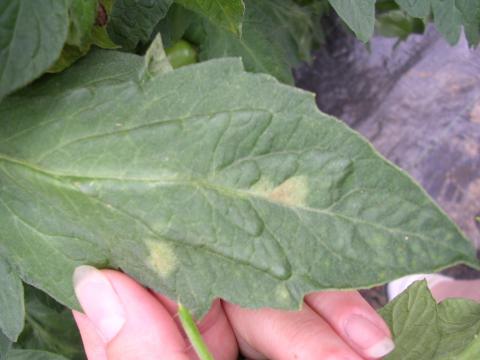WANTED: tomato leaf mold!

Yes, you read it correctly. If you have tomato leaf mold, Chris Smart and her team at Cornell are studying this pathogen; and she needs samples. She also would like samples of bacterial canker, spot and speck of tomato, black rot and Alternaria leaf spot on brassicas, downy mildew of cucurbits, and late blight of potato and tomato. The ultimate goal of studying these pathogens is to obtain knowledge to help with management. If you see any of these this season and are willing to FedEx samples, please send an email to Chris (cds14@cornell.edu) and Holly Lange (hlw7@cornell.edu) so they know to expect them.
They will provide a FedEx account # to charge if you ask. Please use standard FedEx overnight (afternoon delivery). Put sample in ziplock bag and ship promptly - don’t put in refrigerator. This specific permit required to move live plants needs to be printed and put in box. Her shipping address is: Christine D. Smart, Barton Lab - Cornell AgriTech, 15 Castle Creek Street, Geneva, NY 14456, 315-787-2441.
Identifying tomato leaf mold: Tomato leaf mold is most common in high tunnels, but it does occur in the field when environmental conditions are favorable. This disease has very characteristic symptoms that are easily identifiable. The top of the leaf has yellow spots, and when you turn the leaf over, the underside of the same yellow spot is covered with gray-brown fuzz - see below for photos of typical symptoms. If you are uncertain about whether you have tomato leaf mold, and would like help identifying the problem, please contact the UNHCE Plant Diagnostic Lab or any member of the UNHCE vegetable & fruit team.

The upper surface of the leaf at this same spot is yellow.